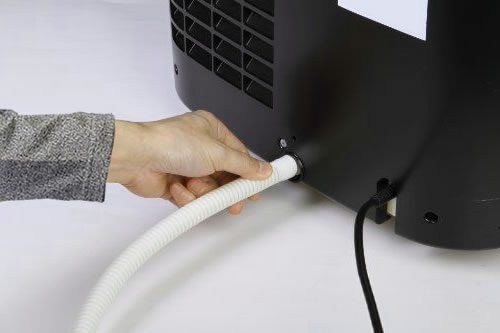Without regularly draining the portable air conditioner’s condensation tank, water can overflow and spill out of the device. Mold can grow in the tank just like it can grow in any other damp environment. Maintaining a portable air conditioner is essential for its proper operation. Portable air conditioner maintenance includes, among other things, emptying the condensate tank. Find the best portable air conditioners at https://www.socool.sg/mitshubishi-aircon/.
How often you need to empty the water from a portable air conditioner is determined by how humid or dry the air is in your home. In this article, we will discuss how often you should empty the water from your portable AC. We’ll also investigate what occurs if a portable AC unit isn’t drained after use.
The relative humidity of your environment:
Portable air conditioners rarely require draining if you are located in a dry location. This is due to the fact that the water used to fill a portable cooling system is recovered during the process of dehumidifying hot, humid air. The air conditioner won’t be able to remove moisture from the air if there isn’t any humidity to begin with. Most cutting-edge portable air conditioners have an exhaust vent that can be used to entirely remove indoor humidity. For more information, pay a visit to https://www.socool.sg/.
The water from the AC unit’s condensate tank is sprayed onto the coil’s surface to accomplish this. Condensate evaporates as it contacts the hot condenser coil. The vapors are then expelled from your home via the exhaust pipe. The water collected in the condensate tank of your portable air conditioning unit may usually be emptied using this method.
When the moisture level in your living space is really high, however, your portable air conditioner will not be able to remove all of the water. Only in really humid climates will you need to routinely empty the tank of your portable air conditioner.
If you don’t empty the water from your air conditioner, what will happen?
An overflowing drainage reservoir on an air conditioner should trigger an automated shutoff. You will need to empty the reservoir before turning on the air conditioner again. But what if there is water in the reservoir even though it is not full?
As long as you are draining your unit properly, this should not be an issue most of the time. But what happens if you put the device in standby mode for a while? If you are not going to be using your device frequently, drain the reservoir to stop the formation of mold and bacteria.
These germs, which can cause allergies alongside other health problems, can multiply in the reservoirs of air conditioners.
How can I empty the water from my portable AC unit?
How often the portable air conditioner requires to be drained is based on the relative humidity in the space. All portable air conditioning units need regular drainage, although the processes for doing so vary widely between models. Among these techniques are:
Manual bucket drainage:
One type of manual bucket drainage equipment includes a removable tank that can be emptied, while another type has a built-in tank that can be tipped over to release water.
Drain hose:
Condensate can be drained by placing the hose outside the window as well as a bucket, and in some cases, an inbuilt pump will help empty the tank in either the vertical or horizontal position.
Involuntary sublimation:
The same pipe used to vent the room’s air also carries away any condensation that may have formed. Keep in mind that if you’re in a particularly humid area, you may still require that you manually drain the portable air conditioner, even if it has auto evaporation.



